Mechanics Lien Release Bond – What Happens Now? What exactly is a Mechanics Lien and Why Might it Need to be Released?
January 04, 2021 —
William L. Porter - Porter Law GroupMechanics Lien Release Bond – What Happens Now? What exactly is a Mechanics Lien and Why Might it Need to be Released?
California law entitles unpaid contractors, subcontractors, and material suppliers to record a mechanics lien on property where they performed work or supplied materials. The mechanics lien attaches to the real property as a legal interest and secures the right to payment for the work performed and materials supplied. If payment is not forthcoming the mechanics lien allows the property where the work was performed and materials supplied to be sold under court order to satisfy the debt. It is a powerful remedy against owners and their agents who do not pay for work performed and materials supplied to improve the owner’s property.
A Mechanics Lien Release Bond Frees Property from a Mechanics Lien
Owners typically do not wish to have their property sold out from under them. Fortunately for owners, there is a method by which a mechanics lien can be substituted for another interest and sale of the property thereby avoided. This method is through the use of a mechanics lien release bond. California Civil Code §8424 allows a property owner or contractor effected by a mechanics lien to record a mechanics lien release bond equal to 125 percent of the lien amount with the County Recorder where the mechanics lien has been recorded. The effect of this is to substitute the mechanics lien release bond for the mechanics lien itself, thereby relieving the property from the possibility of that property being sold to satisfy the debt. Instead, any payment made will come from the release bond.
Read the court decisionRead the full story...Reprinted courtesy of
William L. Porter, Porter Law GroupMr. Porter may be contacted at
bporter@porterlaw.com
Supplement to New California Construction Laws for 2019
January 08, 2019 —
Daniel F. McLennon - Smith CurrieA representative of the Contractors State License Board would like to emphasize a benefit of SB 1042 not mentioned in the report below that Smith Currie published recently. Importantly, the new law allows the CSLB to work with licensees, resolve complaints informally, and avoid a full Administrative Procedure Act hearing brought by the California Attorney General’s office. If the CSLB and licensee are unable to resolve a citation informally, the licensee is still entitled to the APA hearing. Contractors receiving CSLB citations are wise to avail themselves of this process.
Read the court decisionRead the full story...Reprinted courtesy of
Daniel F. McLennon, Smith CurrieMr. McLennon may be contacted at
dfmclennon@smithcurrie.com
Homebuilding Held Back by Lack of Skilled Workers
June 28, 2013 —
CDJ STAFFHome construction in Michigan could surge by thirty-seven percent this year, if the workers are there to build these houses. Aaron Rigozzi, the owner of Semper Fi Construction, told the Detroit Free Press that at the height of the boom he had fourteen employees whose wages reached $25 an hour. Now his firm has filed for bankruptcy and has only three employees. The top wage is $16 an hour. He also has the problem of people whose skills are less than what they claim. “You can hire people and they say they can do this or that, but they really can’t.”
The Home Builders Association of Michigan says that this is stretching out the time to complete a new house by months, and leading homeowners who are looking for a contractor stranded for weeks. In 2012, more home permits were taken out than in any year since 2008.
Read the court decisionRead the full story...Reprinted courtesy of
Autovol’s Affordable Housing Project with Robotic Automation
February 15, 2021 —
Aarni Heiskanen - AEC BusinessJust over two years since breaking ground, Autovol is now using automation in new ways as it nears completion of its first major affordable housing project. The project, Virginia Street Studios, will make high-quality apartment homes more affordable to seniors in San Jose, one of America’s 10 most expensive cities.
The 400,000 square foot Autovol factory has now successfully deployed its unique combination of construction trades and robotic automation. Autovol has hired more than 100 employees, which the company calls Solutioneers. Led by CEO Rick Murdock and co-developed by The Pacific Companies, Autovol is pioneering a new kind of modular construction.
Robotics lead into the future of housing
“Automation and robotics will lead the world into the future of housing,” Murdock said. “What we’re doing hasn’t been attempted before. Our investors and Solutioneers leaned in with lots of confidence, and now we’re seeing great results that prove they were right.”
Read the court decisionRead the full story...Reprinted courtesy of
Aarni Heiskanen, AEC BusinessMr. Heiskanen may be contacted at
aec-business@aepartners.fi
Motion to Dismiss Insurer's Counterclaim for Construction Defects Is Granted
June 29, 2017 —
Tred R. Eyerly - Insurance Law HawaiiThe court granted the insured's motion to dismiss the insurer's counterclaim arising out of construction defects. Centrex Homes v. Zurich Specialties London Limited, et al., 2017 U.S. Dist. LEXIS 77212 (D. Nev. May 19, 2017).
Centrex, the general contractor, was sued by homeowners in a residential development known as Liberty Hill Estates. The suit alleged that defective work had been performed by Centrex's subcontractors, one of which was Valley Concrete Company, Inc. The insurer had issued a policy to Valley and Centrex was an additional insured. The insurer agreed to defend, but only paid a portion of the defense fees and costs because the policy only covered Centrex as to liability arising from Valley's work. The insurer refused to pay defense costs incurred prior to March 28, 2012 the date of notice of claims arising from Valley's work.
Centrex then filed suit against the insurer alleging breach of contract and bad faith. The insurer filed a counterclaim seeking a declaration that it had no duty to defend. The insurer claimed that Centrex failed to cooperate by unilaterally switching counsel without prior notification to the insurer. This deprived the insurer of the right to control the defense and discharged the insurer's obligations under the policy. Centrex moved to dismiss the counterclaim.
Read the court decisionRead the full story...Reprinted courtesy of
Tred R. Eyerly - Insurance Law HawaiiMr. Eyerly may be contacted at
te@hawaiilawyer.com
DC Circuit Approves, with Some Misgivings, FERC’s Approval of the Atlantic Sunrise Natural Gas Pipeline Extension
December 02, 2019 —
Anthony B. Cavender - Gravel2GavelThe U.S. Court of Appeals for the DC Circuit decided the case of Allegheny Defense Project, et al. v. Federal Energy Regulatory Commission on August 2, 2019. In a Per Curiam opinion, the court denied petitions challenging the Commission’s orders permitting the Transcontinental Gas Pipe Line Company’s expansion of an existing natural gas pipeline which extends from northern Pennsylvania across the Carolinas into Alabama. The expansion is called the “Atlantic Sunrise Project.” In February 2017, FERC approved the expansion, and denied various petitions, filed by environmental organizations and affected landowners, who then challenged the decision in the DC Circuit. However, the court concluded, on the basis of the administrative record, that these challenges “cannot surmount the deferential standards of agency review and binding DC Circuit precedent.” Under the law, the Commission must consider whether the projected pipeline project meets a market need, and whether the public benefits outweigh the harms. If both criteria are satisfied, FERC will, as in this instance, issue a certificate authorizing the pipeline’s construction, and that certificate also empowers the certificate holder to exercise eminent domain authority under to the Natural Gas Act when necessary. It was the latter consequence of the FERC’s determinations that caused several Pennsylvania landowners to file their objections with the Commission and seek to stay construction.
Read the court decisionRead the full story...Reprinted courtesy of
Anthony B. Cavender, PillsburyMr. Cavender may be contacted at
anthony.cavender@pillsburylaw.com
20 Years of BHA at West Coast Casualty's CD Seminar: Chronicling BHA's Innovative Exhibits
May 03, 2018 —
Beverley BevenFlorez-CDJ STAFFThe Bert L. Howe & Associates, Inc., (BHA) exhibit has been a fixture at West Coast Casualty's Construction Defect Seminar since the mid-1990's. Through the years, BHA has updated their display, but no matter what year, you could count on the BHA exhibit to provide a not-to-be-missed experience.
2008-BHA's sleek, rear projection display includes a screen that promotes the firm's capabilities that can be seen throughout the exhibit hall. This would be one of many innovations BHA has brought to the West Coast Casualty seminar.
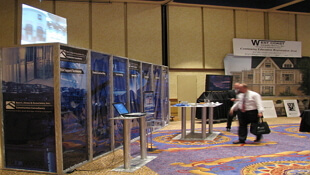
2009-With the success of the rear screen projection, BHA adds additional monitors to provide attendees with more information about BHA.
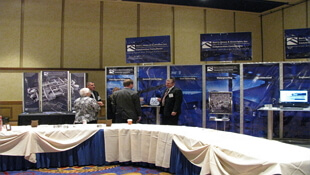
2010-BHA adds an interpretive professional development exhibit targeted to Building Envelope issues allowing adjusters and other non-construction professionals hands on access to the systems and components at the heart of many related such claims.


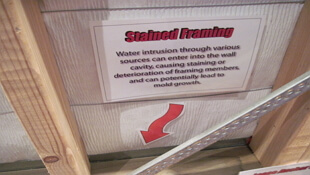
2011-BHA's Swing for Charity challenge is born.

2012-Always innovating, BHA expands its rear projection and professional development offerings to West Coast attendees.

2013-BHA showcases additional capabilities with a twenty-four foot, custom, convex, immersive video experience.

2014-BHA adds an iPhone display to give a hands-on demonstration of their data collection methods.
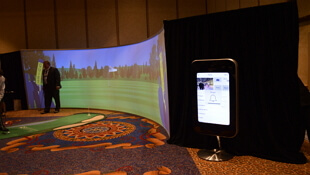
2015-BHA's twenty-four foot , custom, convex, immersive video experience was elevated with two additional rear projection screens, reflecting BHA's newest capabilities and services.

2016-BHA dazzles attendees with their new exhibit comprised of more than 15 integrated, high definition, LCD displays. iPads are stationed on tables to conveniently demonstrate BHA's data collection processes.
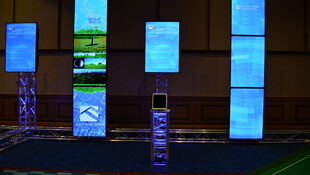
2017-BHA's Swing for Charity Golf Challenge raised $2,225.00 for the National Coalition for Homeless Veterans and $1,900 for Final Salute.
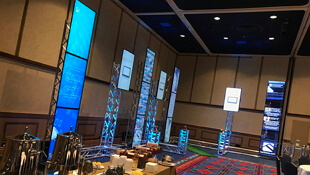
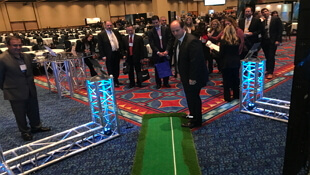
Read the court decisionRead the full story...Reprinted courtesy of
Plaintiffs Not Barred from Proving Causation in Slip and Fall Case, Even With No Witnesses and No Memory of Fall Itself
February 01, 2022 —
David Hoynacki, Arezoo Jamshidi & Lawrence S. Zucker II - Haight Brown & Bonesteel LLPOn January 19, 2022, the California Court of Appeal, Second Appellate District (Los Angeles), held that a plaintiff is not barred as a matter of law from proving causation in a slip and fall case if there were no witnesses to the fall, and the plaintiff does not remember the fall itself. The Court of Appeal stated specifically that circumstantial evidence would permit a jury to make a “reasonable and probable inference” regarding contributing factors to a fall, even with no eye-witness evidence.
In
Kaney v. Mazza (BC619247, Jan. 19, 2022), plaintiff and appellant Lydia Kaney (Kaney), was visiting her sister in her rented home in September of 2014. At some point during the visit, the light in the bathroom at the top of the stairs stopped working—Kaney used the stairs, and fell. Kaney filed suit against her sister and the owner of the home alleging premises liability, negligence, and violation of the Americans with Disabilities Act (ADA). In her deposition, Kaney testified that she remembered going up to the bathroom, and then waking up on the floor in pain. She could not remember how she fell; she did not know if she had missed a step, or if she had slipped and fallen backwards. She speculated that a worn-out bath mat may have been the cause of the slip and fall because the rubber traction on the bath mat was worn away.
Reprinted courtesy of
David Hoynacki, Haight Brown & Bonesteel LLP,
Arezoo Jamshidi, Haight Brown & Bonesteel LLP and
Lawrence S. Zucker II, Haight Brown & Bonesteel LLP
Mr. Hoynacki may be contacted at dhoynacki@hbblaw.com
Ms. Jamshidi may be contacted at ajamshidi@hbblaw.com
Mr. Zucker may be contacted at lzucker@hbblaw.com
Read the court decisionRead the full story...Reprinted courtesy of




































































